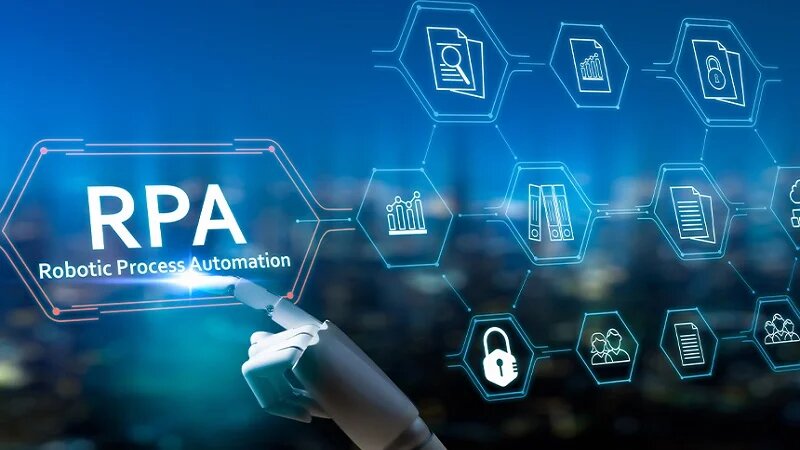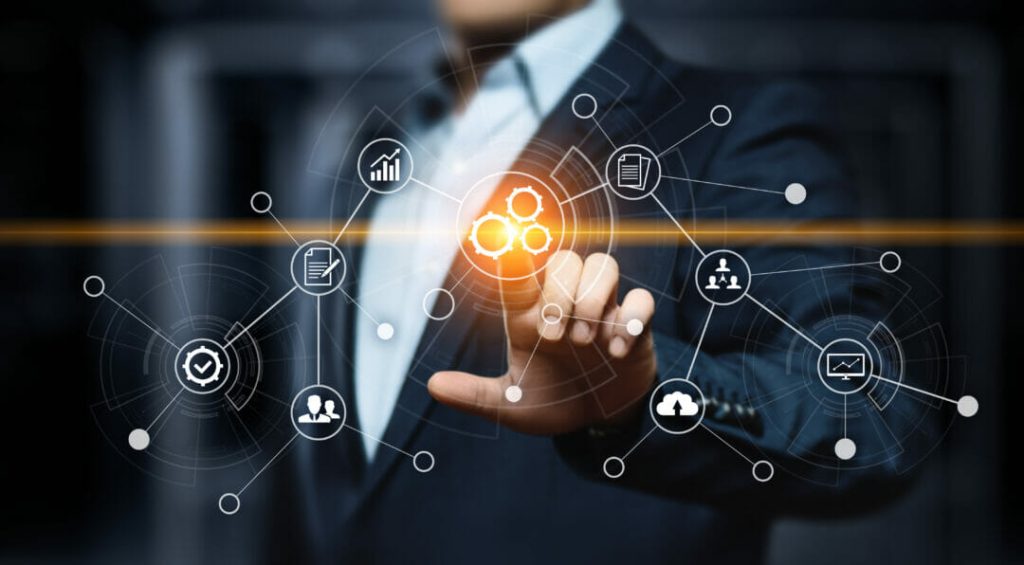Introduction To Robotics Automation Software
In today’s speedy world, companies in all kinds of jobs always try to get better at being quick and correct with their work. A new type of helpful answer getting much attention is software for robots to act independently. These unique and modern tools are changing how we look at data, helping groups to be more exact than ever before. In this piece, we’ll look into the various kinds of automatic work in studying data, how robotics machines play a part in working with information, and the good parts about having software that controls them to do tasks. We will also talk about businesses that benefit from these solutions now and their types of use, along with essential features or ways it can be helpful to think when picking the correct program for your needs; lastly, what changes could come next due to rapid growth seen recently within.
Automation in Data Analysis
Using machines to look at data means using computer programs and rules that work alone, without help from people. This way, we can skip doing tasks again over a lot of time spent on taking apart tons upon tons of information piles up in our systems for study purposes. There are two main types of automation in data analysis: automation based on rules and automation using machine learning.
Robotics automation software solutions making rules for a machine means setting up fixed steps and instructions that guide the software to do certain jobs when specific situations are met. This automatic work is good for jobs with clear and set rules, like cleaning up data, putting data in groups, and simple math checks.
In contrast, automation that uses machine learning relies on intelligent rules and computer thinking to help the program understand patterns in data. This allows it to make wise choices based on what it has learned. This kind of automatic working benefits complex jobs like guessing patterns, finding strange things, and talking humanely.
Robotics in Data Analysis
Using robots to do data analysis brings a new level of automatic work. Software that controls robots mixes the ability to do things without help with robot knowledge. This allows the program to work using info and do jobs that need hands-on movement.
There are two primary types of robotics in data analysis: physical robotics and virtual robotics. Physical robotics involves using robots fitted with sensors and controls to handle real things, gather facts, and do jobs like getting data, putting in details, or turning around physical information. Conversely, virtual robots use digital characters that can work with information and do jobs in online settings. These machines benefit jobs like showing data, checking out or exploring information, and doing things in a pretend world.
Advantages of Robotics Automation Software
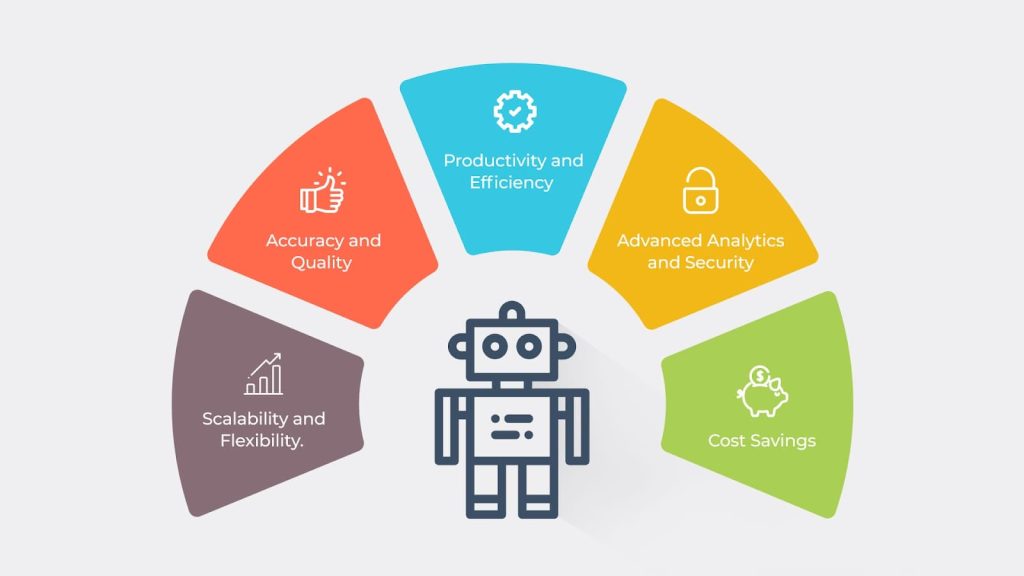
The adoption of robotics automation software offers numerous advantages for businesses seeking to enhance efficiency and accuracy in data analysis.
1. Increased Speed and Productivity
By making it easier to do over and over again tasks, software tools for robots can cut down the time needed to look at data. This makes us learn things more quickly and work better in less time.
2. Enhanced Accuracy and Consistency
Robots don’t get tired or lose focus like people, so they can always study data correctly. This makes mistakes less likely and improves how trustworthy the results are.
3. Scalability and Adaptability
Software for automatic robots can manage much information and change size as required. They can adjust to different business needs, making them flexible and budget-friendly.
4. Cost Savings
By putting tasks of measuring and looking into data on automatic, companies can lower the money they spend on people doing this work by hand. This lets groups use their things more smartly and put money into other significant parts.
5. Improved Decision-Making
With help from robot tools, companies can get the latest information and make choices based on facts faster. This makes our work better and gives us an advantage in the market.
Industries Benefiting from Robotics Automation Software Solutions
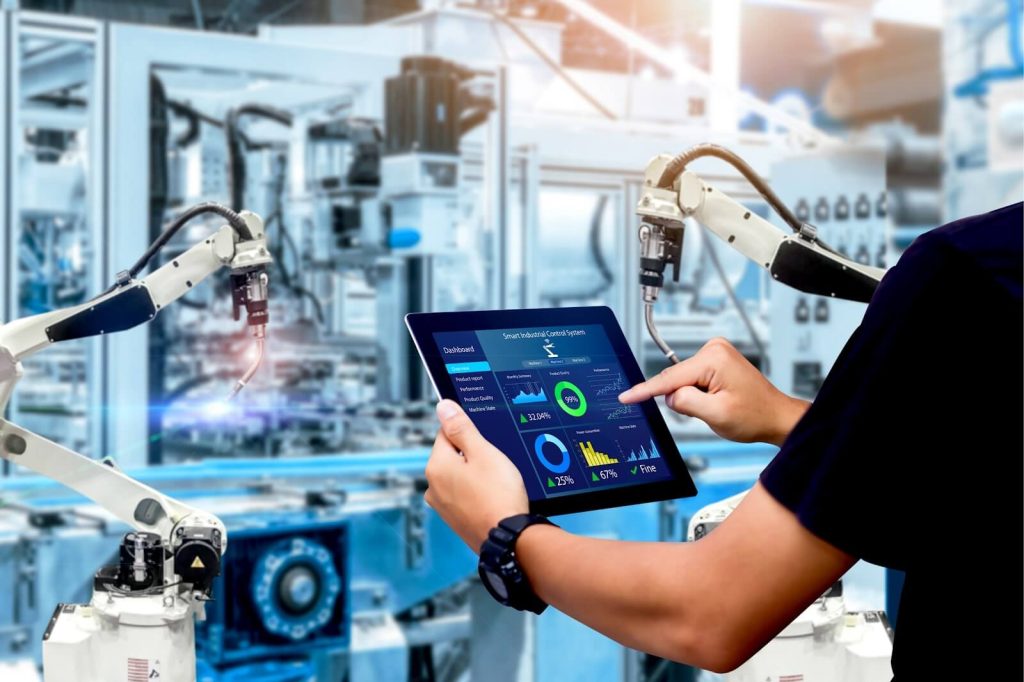
Many types of businesses are improving because they use software that controls robots. Some of the key sectors that have embraced this technology include:
-
Manufacturing and Logistics
Software solutions for robots help change how products are made on production lines. They also make it easier to move materials, keep track of stock, and improve getting goods from suppliers to customers. These answers help companies make their work easier, reduce spending, and boost all output types.
-
Healthcare
In the field of health care, computer programs that run robots are being used to do things like look at medical facts, watch over patients, help with operations, and find new medicines. These gadgets make tending to patients better, help doctors find what’s wrong more accurately, and speed up health studies.
-
Finance and Banking
Automation software for robots is changing how money and bank businesses work by making tasks like finding out if someone’s lying, checking danger levels in deals, helping customers with questions more accessible, and keeping an eye on the rules all automatic. These ideas improve safety, increase speed and quality, and guarantee the rules are followed.
-
Retail and E-commerce
More and more shopping stores and online shops are starting to use robot-control software tools. They find them useful for jobs like keeping track of items in stock, handling orders from customers, and helping their clients with any questions or problems. These tools allow businesses to give smooth customer service, reduce mistakes, and make their supply chains work best.
-
Energy and Utilities
Robotics software solutions are vital in energy and power. They help by doing jobs like looking at data to predict when things will need fixing, closely watching over stuff of value, and finding ways to use less or save more electricity. These answers aid groups in cutting off time when work stops, ensuring things are used better, and using less power.
Typical Applications of Robotics Automation Software Solutions
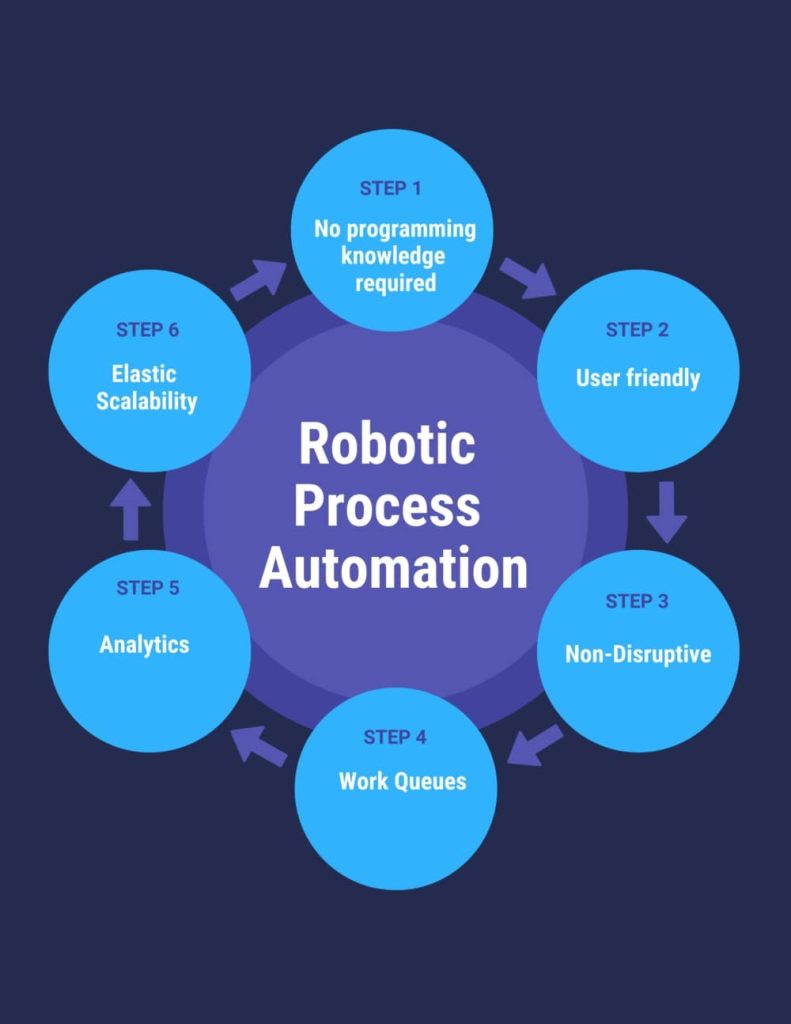
The uses of robot software systems are extensive and keep growing as tech improves. Some of the standard applications include:
-
Data Cleansing and Preprocessing
Robot machines can use computer programs to clean and prepare data automatically, ensuring it’s correct before we look at the details.
-
Predictive Modeling and Forecasting
These answers use innovative computer programs to create guess models and make correct future guesses. This helps businesses make wise choices and expect what’s next in trends.
-
Anomaly Detection
Software used in robotics machines can find strange and unexpected things when looking at information. This helps companies spot lies, mistakes, or odd trends needing more checking.
-
Natural Language Processing
These answers use intelligent rules to think about and get human speech, which allows things like feeling study, text sorting out, and chat robot talks.
-
Virtual Data Visualization
Robot automation computer programs can make fake versions of data, letting people look into and see information in full-on pretend worlds.
Paving Path of Latest Trends Technologies in Software Testing
Latest technology trends in software testing that are mostly valuable for companies and businesses. QA expert must need to repeatedly go over with these appear software testing trends to stay forwards in the aggressive.
How Robotics Automation Software Solutions Ensure Precision and Accuracy
Robotics software tools ensure data is looked at with high detail and correctness using advanced technologies and options. Some key factors that contribute to their effectiveness include:
-
Robust Data Processing
These answers use innovative steps and work simultaneously to handle a lot of data effectively. This makes the study quicker and lessens the chance of mistakes.
-
Intelligent Data Integration
Software tools for running robots can easily mix data from many places and types. This ensures we look at all the details and lowers the chance of not having complete or mixed-up information.
-
Machine Learning Algorithms
By using machine learning tools, robotic software can learn from the ways data is organized and make intelligent choices. This makes the study more correct and allows us to foresee what could happen.
-
Real-Time Monitoring and Alerting
These answers give on-the-spot checking of data flows and can make warnings or notices following set rules. This lets companies react quickly to essential happenings or strange things.
-
Audit Trails and Version Control
Software-running robots carefully track and control changes, ensuring everything is clear and can be followed quickly. It also allows us to return to earlier versions if needed.
Key Features and Functionalities of Robotics Automation Software Solutions
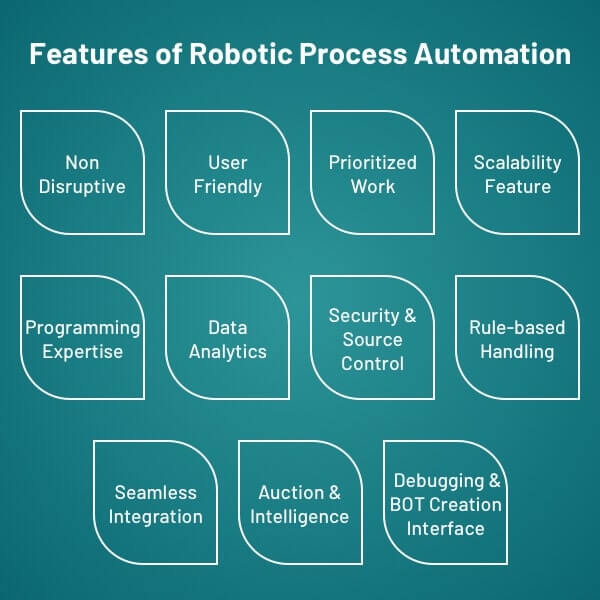
When choosing robot control software, it’s important to consider the main parts and abilities they provide. Some of the crucial aspects to look for include:
-
User-Friendly Interface
A simple and easy-to-use layout lets people use the program well, making it quicker to learn and pick up.
-
Customization and Flexibility
It’s imperative to be able to change the software for your business needs. Search for answers that can adjust to fit various types of data, styles, and needs in studying.
-
Integration Capabilities
Software for robot control must fit in easily with what’s already working and the tools you use, making sure data can move without issues across the whole company.
-
Security and Data Privacy
Because data analysis is critical and needs careful handling, we must pick methods that put information safety first. Search for things like hiding information, controlling who can use it, and following rules that matter.
-
Scalability and Performance
Think about answers that can deal with growing amounts of data and do complicated checking fast without ruining how well they work.
Considerations When Choosing Robotics Automation Software Solutions
When selecting robotics automation software solutions for your organization, it is vital to consider the following factors:
-
Business Needs and Objectives
Figure out what your business needs and goals so you pick a solution that matches them. Think about things like how hard the study is, the number of details you have and need to handle, and if it can increase.
-
Vendor Reputation and Support
Do a lot of studying on how trusted and well-known the software seller is. Search for buyer comments and real-life examples of use and judge how much help they give.
-
Integration with Existing Systems
Check how well the robot control computer program fits your current systems and tools. Working well and moving data easily is very important for smooth operations.
-
Cost and Return on Investment
Judge the total price of having something, counting fees for using it legally, costs to set up, and ongoing support. Think about the possible benefits of saving time, making fewer mistakes, and doing more work.
-
Training and Adoption
Think about the steps needed to train and get your team ready so they can use the software well. Search for answers that give complete training resources, lessons, and continuous help.
Future Trends in Robotics Automation Software Solutions
The field of robotics automation software solutions is constantly evolving, and several exciting future trends are emerging:
-
Advanced Machine Learning
As machine learning programs improve, software for robots that work by themselves will become more innovative and more flexible. This means they can guess things coming up in the future or make choices with improved accuracy.
-
Internet of Things (IoT) Integration
Combining innovative machine control programs with internet-connected objects lets us gather and study data more thoroughly. This also helps make tasks automatic. This will bring about brighter understandings and better ways of working.
-
Natural Language Processing Advancements
Software that controls robots will keep getting better at understanding human speech, leading to more exact feelings study, talking back and forth with chat machines, and voice picking up.
-
Enhanced Virtual Reality (VR) and Augmented Reality (AR) Integration
Using VR and AR tech with robot control software will make it easy to see data more real and interactively.
-
Autonomous Robotics
As robot technology improves, we can look forward to seeing the rise of robots that work independently and can do hard number-checking jobs without help. This will make things move faster and be more right all the time.
Conclusion
Software for robot work is changing how companies study and use data, making them faster and better at getting things right. By using machines to do the same work repeatedly, using clever math methods, and adding robot technology together, different groups in many types of jobs are getting good results, like more accessible ways to run things, better decision-making, and less spending. As things keep changing, companies that want to stay on top in a world filled with more and more data need to understand the main parts, uses, and what’s coming next for robot computer programs.


